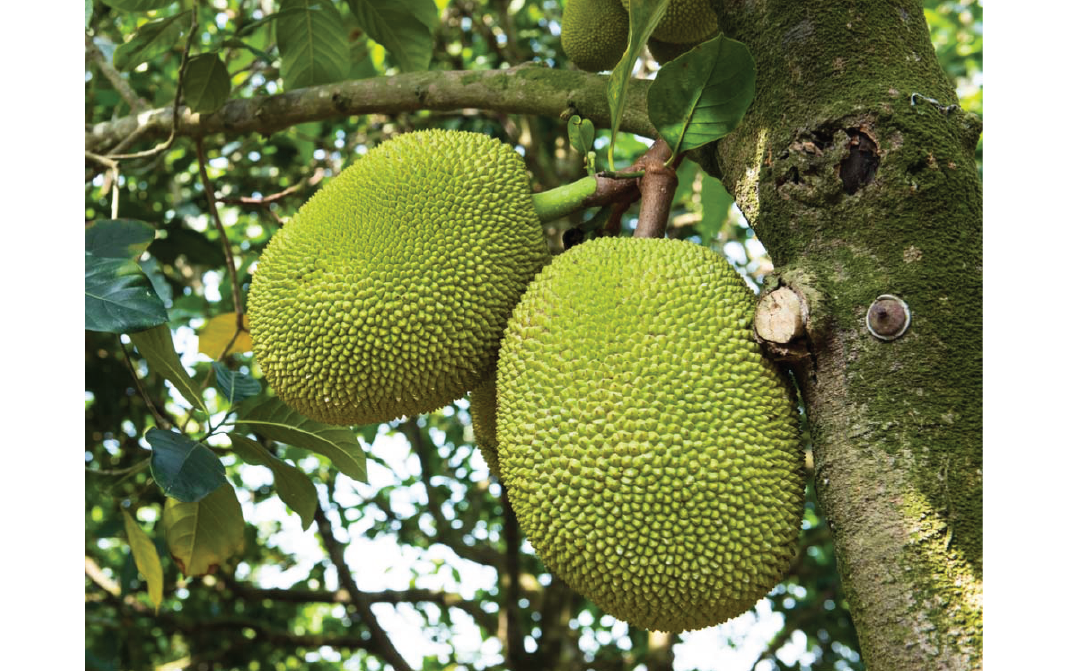


It helps in improving the digestion, as it is said to have two kinds of fibers - soluble and insoluble. Therefore, its intake supplies a considerable amount of fibers in our daily meal, thereby, the soluble fiber is quickly broken down by the body to incorporate energy, while the insoluble fiber adds bulk to the stool, hence easing the very bowel movement. (1)
Jackfruit is rich in calcium that strengthens the bones, likewise, it is also high on potassium that puts a check upon the loss of calcium through the kidney. Thereby, it helps in dealing with bone-related disorders like arthritis; osteoporosis. (1)
Jackfruits are also known to help in alleviating the symptoms of asthma such as difficulty in breathing, wheezing and panic attacks. Thereby, boiling the roots of jackfruits and consuming them has shown effective results in reducing the said symptoms of asthma. (2)
Always go jackfruits those give a sweet smell, and avoid those that do not give a strong smell as that probably indicates that it’s still raw, or not fully ripe.
Although jackfruit is considered to be healthy food, it does have certain side-effects an allergies, henceforth, are not recommendable for consumption to those dealing with birch pollen allergies, the symptoms are like high fever or an itchy mouth or throat. Moreover, people with blood disorders should not consume jackfruits as it might increase the very chance of blood coagulation. (3)
- Disclaimer
"Information here is provided for discussion and educational purposes only. It is not intended as medical advice or product or ingredient review/rating. The information may not apply to you and before you use or take any action, you should contact the manufacturer, seller, medical, dietary, fitness or other professional. If you utilize any information provided here, you do so at your own risk and you waive any right against Culinary Communications Private Limited, its affiliates, officers, directors, employees or representatives.”
Description
Jackfruit happens to be both the name of the fruit and the tree it grows on. It grows on both the branches and trunks of trees. When fully matured, they measure up to 80 cm long and 50 cm wide and weighs somewhere from 10 to 50 pounds. The rind of jackfruit changes colour from bright green to dull yellow when it ripens and might also develop dark patches. The inner part of the fruit just beneath the rind is the bright yellow bulbs that are said to be the edible portion of the jackfruit. While the young jackfruits have a crisp, crunchy texture, whereas the more mature ones might be firm or much softer, almost custard-like, depending on the variety. The seeds are an inch in size covered by a thin white membrane that is usually removed at the time of roasting. The aroma of the mature jackfruit is regarded as quite unpleasant, similar to an overripe one. While the younger fruits have a sweeter aroma. And as the fruit matures, the bulbs turn darker orange-yellow and the taste becomes sweeter. Jackfruit belongs to the mulberry family and is said to be the largest tree fruit in the world. In spite of being a native to the Indian subcontinent, the jackfruit is not consumed as it is in other areas of southwest Asia and Indonesia. They must have been originated in a mountainous region of the western ghats. They usually grow in a hot humid environment and are intolerant of drought and freeze. It is available all around the year.